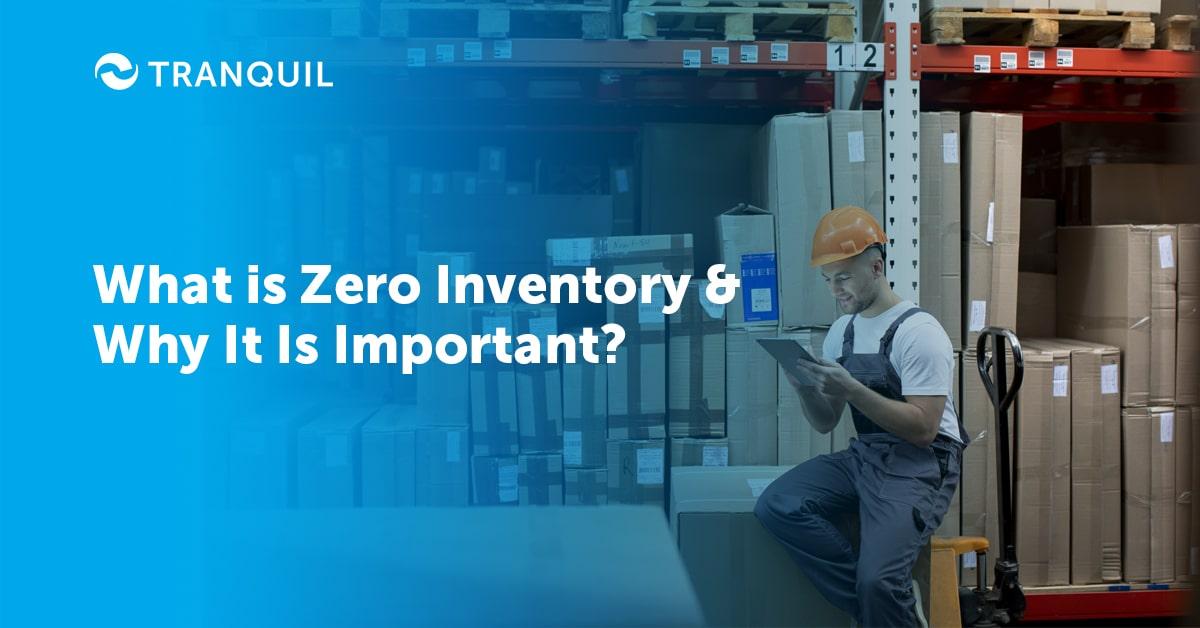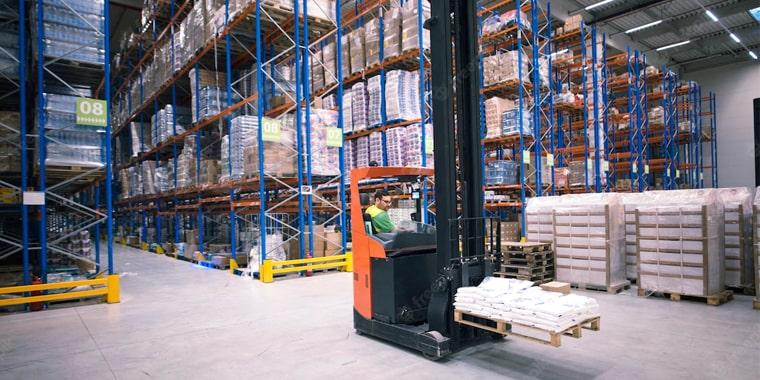
The general notion most people have about a business is that if they have plenty of goods in stock to sell, or loads of raw material in the warehouse to produce goods, it is doing well – it has goods that can be sold for money.
In short, the inventory is seen as an asset.
You wouldn’t be entirely wrong if you thought so, but you would not be entirely correct either.
After all, inventory has to be stored well, and protected from theft and damage; certain products need air conditioning, waterproofing, controlled environments, and so on.
Some stock may be lost to spoilage inadvertently.
Ergo, while stock is an asset, it also incurs expenses for storage and maintenance while decreasing in value with the passing of time.
This is why most businesses try to reduce the inventory they hold; the concept of zero inventory has also become more popular now due to the risks associated with overstocking.
As the name suggests, it refers to the practice of storing the least quantity of inventory, allowing the company to fulfil orders immediately.
ALSO READ: What is Negative Inventory and How Can you Prevent it?
Zero inventory does not exactly mean no inventory whatsoever.
It is an inventory and supply chain management strategy which aims at maintaining as minimal inventory as possible.
Just enough stocks are kept so that shipping times or production schedules can be carried out as determined beforehand.
This also means that orders have to be fulfilled immediately on stocking or producing new products.
In short, with a zero inventory system, you don’t accumulate raw materials or products in your warehouse.
Hence, zero inventory is also called the just-in-time inventory model, as new inventory is either bought or manufactured just in time to fulfil the latest orders.

Any business has to spend money to maintain warehouses; a manufacturing company is even more so, as they have raw materials as well as finished products.
This means they end up tying up a substantial sum in inventory.
Let’s say they feel the need to expand – perhaps open another branch at a new location as the demand is increasing in that area; if they follow a zero inventory approach, it means they have the money to spare for expansion.
On the other hand, if they have loads of inventory, their carrying costs are likely to be high as well, which means no spare cash for expansion, or even upgrading equipment or technology.
ALSO READ: What is Dropshipping and it’s Benefits?
Financial benefits are the biggest gain you can make with zero inventory management; this is because companies can free up a significant amount of money by reducing the inventory they keep on hand.
This money can be used for a multitude of purposes, keeping the company right on track to growth and success.
It costs a pretty penny to store goods, and the longer you store, the more expensive it becomes.
You have to lease or rent warehouses, insurance, taxes, pay for refrigeration (perishables, medicines, etc.), security, and packaging, and then there is the opportunity cost of not being able to use that space for more productive activity.
Therefore, it’s only logical that when you store a lesser quantity for a lesser time, you can save a great deal.
You also don’t have to worry about damage, obsolescence (electronics and fashion), expiry (for perishables), and theft when you store only enough inventory to fulfil immediate orders.
So, less risk, and less expensive.
ALSO READ: What is Batch Tracking?

In addition to the expenditure, storage also necessitates time and effort from your workforce.
Inventory can’t be haphazardly bundled together; it has to be categorized and stored in an organized manner.
This makes it easy for employees to pick, move, and count the items.
The more inventory you have, the more time and money you spend on these activities.
With zero inventory, however, you don’t have to worry about any of it.
As zero inventory means stocking the least possible items, the business will have smaller bills to pay to their vendors, as the order quantity will be less.
With smaller quantities, they can also negotiate deals where they pay vendors after selling the goods.
This is an ideal situation for a new business just trying to make its ground.
ALSO READ: What Is Cloud Data Protection?
When you stock large amounts of inventory you will also be liable to pay higher insurance premiums.
The fewer the products or lesser the raw material you stock, the lower will be your insurance cost.

While zero stock inventory has significant cost savings for any business, you must also be aware of its pitfalls.
The best way to understand how it works is to look at a few examples.
Amazon, eBay and other online marketplaces have no or few warehouses.
They take orders from customers, connect with the original maker or seller via an inventory management system, and then ship the product to the customer.
Here, the retailers act as middlemen.
They tie up with certain sellers or manufacturers and advertise their products without stocking them.
However, they may maintain a small inventory of certain items that sell in big numbers.
ALSO READ: Common Inventory Management Problems and Solutions
Bespoke clothes for men and women are designed and stitched specifically for individuals.
Their measurements are taken, and they select the fabric they want according to material, colour, pattern, etc.
The clothes maker does not have to stock a lot of material, as such customers are prepared to wait to get that perfectly tailored outfit – they don’t expect to get it in one day.
As opposed to a restaurant, a caterer only makes food to order.
They may only stock a few basic ingredients required for most dishes like oil, salt, spices, certain flours, etc.
Special ingredients, fresh vegetables, fruit, and meat, are purchased as and when they get orders.
This poses no risk of spoilage.
ALSO READ: Common Inventory Management Mistakes to Avoid

When you want to implement zero inventory, it is essential that you have a solid supply chain management strategy in place too.
Zero inventory actually puts a lot of pressure on the whole supply channel; this is because to facilitate zero inventory, the supply chain has to bear the entire burden of carrying both inventory and raw materials.
That is, there is more frequent movement of these items through the supply chain.
Vendors have to be super-efficient and operate seamlessly so that they are able to handle frequent, small-volume production runs.
Orders have to fulfilled individually, and shipped directly to the customer.
Of course, they are likely to insist on minimum purchase quantities.
It also necessitates manufacturers to get involved directly in the ordering process and customers.
This means they need to be tech-enabled, have the right skills, and implement proper B2C ordering and delivery processes in their business.
It is critical that businesses maintain robust relationships with the supply chain, and to achieve this, they need to communicate effectively and collaborate with them closely.
ALSO READ: What is Pipeline Inventory?
Goods need to be manufactured and shipped depending on the actual consumption and demand – only then can the zero inventory model work properly. A robust inventory management system can help companies to optimize inventory processes, and give them all-round visibility of their vendors across the supply chain.
Reliable ERP software with efficient inventory control modules can ensure that information is instantly updated across systems as sales happen.
If a business has goods that depend on raw materials in production, then the management can hide that product on their site or their sales platform to avoid displeasing customers.

Obviously, we cannot expect a business to hold absolutely any stock at all; they will keep some buffer stock.
We have already seen that in case of emergencies, calamities, and other unforeseen circumstances, having no stock can be disastrous for a business.
To ensure customer satisfaction, a certain amount of inventory should be maintained in the company.
What a business is likely to do is stay as close as possible to zero inventory to enjoy cost savings, better cash flow, and less inventory loss.
ALSO READ: What is Stock Adjustment and Stock Transfer?
A business must have excellent control over their inventory, coordinate supply chains well, and forecast demand accurately, to successfully fill new orders as they come in, with zero stock inventory.
Let’s look at it in some detail:
Timing is a crucial factor here; a company must know when exactly they will get delivery of new stock from their factory or vendor so that the products spend little to no time as inventory in the warehouse.
Demand forecasting plays a huge role here.
Historical data, seasonal trends, and market patterns – all of these can be used to predict future trends.
In some industries, companies enter into contracts for long-term purchases with their most important customers, reducing ambiguity over demand.
ALSO READ: Tips For Efficient Stocktaking
Manufacturing companies must sync production with demand planning to align the new orders with the latest products; this has to be done through small, frequent production activities.
Companies that are agile, and fast, have a great advantage here.
Even if a sudden spike in orders occurs, they can quickly scale up the production to meet that demand.
Most companies work with numerous vendors.
Whenever they receive new orders or forecasts, the management should be able to produce or purchase the exact quantity of materials or finished goods in time.
This would mean having an excellent relationship with vendors who can respond quickly to their needs.
ALSO READ: Why ERP User Interfaces are Important?
The customer is at the end of the supply chain – and the ultimate goal of any business is to satisfy the customer.
This means fulfilling orders quickly and delivering quality products.
In custom-made products like certain clothes, foods, and so on, the customers are willing to wait.
They know that to get exclusive things, there will be a certain waiting period.
Likewise, B2B customers who place huge orders are aware that it can take a longer time for the vendor to fulfil the order, and will wait for a certain amount of time.
A robust ERP with customizable features and an efficient inventory control module, like Tranquil, can help you implement inventory strategies that are best suited for your business. To see how it works, do schedule a demo at your convenient time. Our executives will walk you through the software and answer any queries you may have.